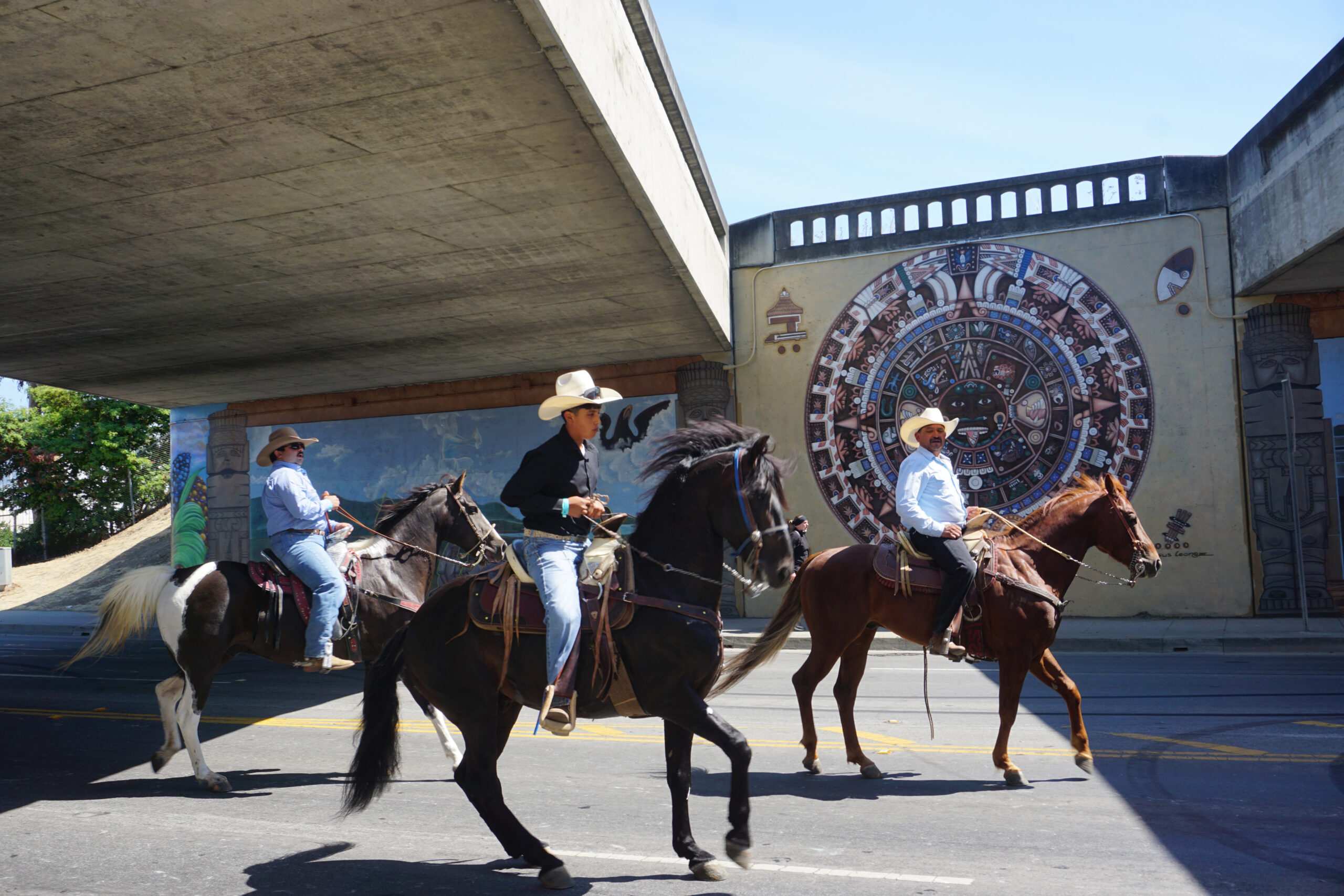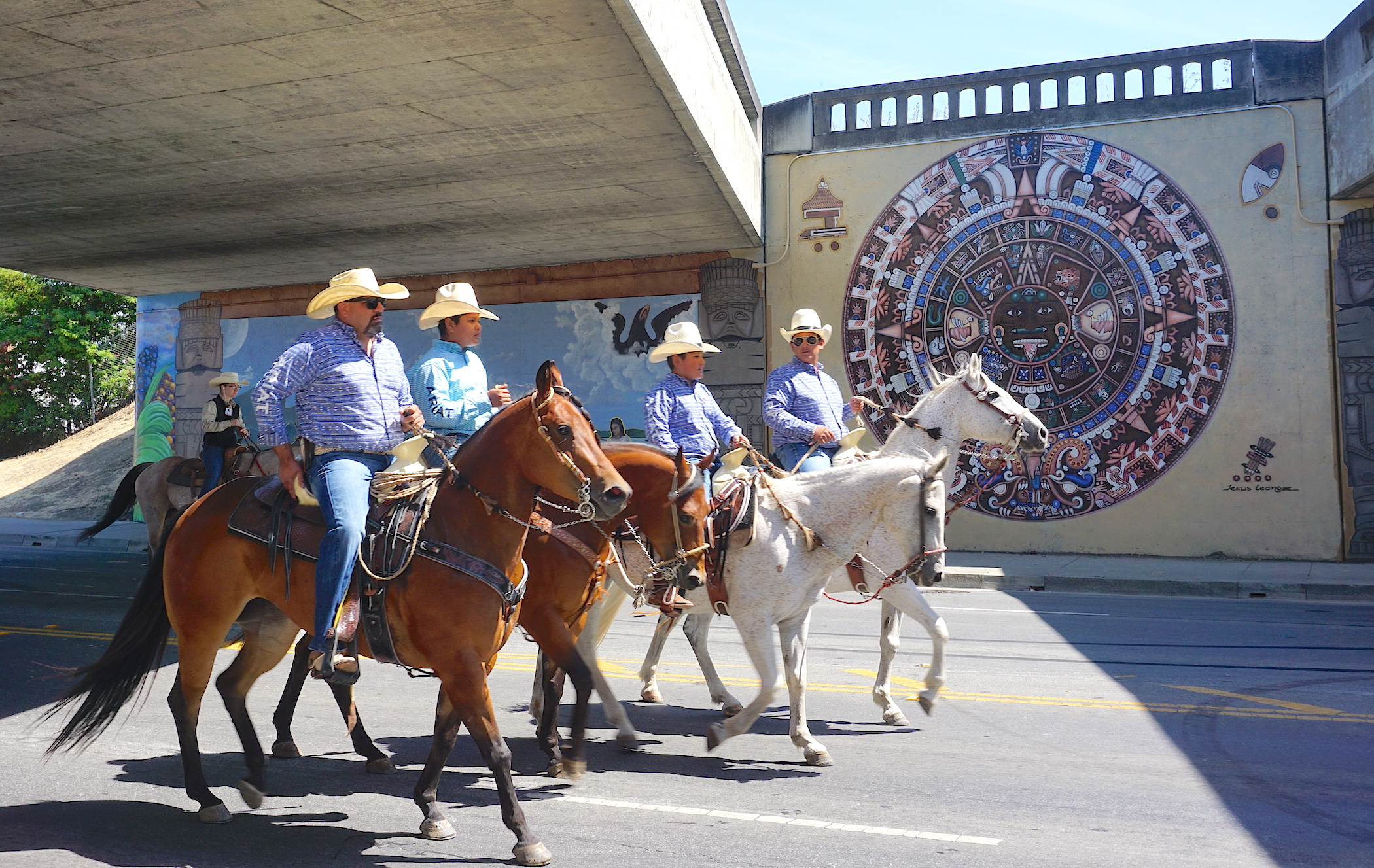| YOUNG VOICES MEDIA PROJECT
By Carolyn Dorantes
With rodeo’s longstanding Spanish and Mexican heritage, it is no surprise that the city of Salinas, which is predominantly Latino, has been aiming to bring both American rodeo and charreria together. Both sports’ daring horse acts and culture have been growing together in Monterey County for years.
The idea of the rodeo originates with Mexican vaqueros in Texas and California rounding up cattle on their horses. Salvador Muñoz, a Salinas historian and cultural preservationist, said, “The vaqueros, in their free time, would practice and train the new helping vaqueros; they created contests of all sorts of horsemanship and cattle handling.” This showmanship influenced many American cowboys to adapt their own riding styles and to organize their own events.
The rodeo was first introduced to U.S. audiences through the Wild West shows popularized by Buffalo Bill starting in 1883. Some of these shows depicted cowboys riding horses and lassoing cattle. This romantization of the American West persisted and can still be seen in current rodeos, like the California Rodeo Salinas.
The establishment of the Salinas rodeo is similar to those across the United States. Salinas began hosting equestrian sports after Eugene Sherwood and Richard Hellman donated 69 acres to the city of Salinas in 1872 to build a horse racetrack. The popularity of those races evolved to other local horse-bucking events and eventually resulted in hosting a “Wild West” show or rodeo. The Salinas rodeo is now in its 113th year.
"It’s difficult for local charros to practice locally, but I do know of charros who participate in the sport of charreria in the U.S., they just practice in Gilroy, Morgan Hill, or San Jose, other lienzo charros that take the measurements and shapes that are required to participate in charreria.” Ricky Cabrera, local charro and events coordinator
In the present day, with Salinas’ growing Latino population, many have expressed the desire for the California Rodeo Salinas to incorporate charro culture into some of the event days. Many Mexican-Americans take pride in charreria as it blends both agriculture and colorful traditional art to tell the story of Latinos of centuries past. Much of artists’ heart and soul are sewed into charro uniforms that pay homage to Mexico’s history and culture.
The charreada is similar to American rodeo, where teams and individuals compete in various events to score as many points as possible. One of the most notable events is El Paso de Muerte, where a charro riding bareback jumps to another bareback horse with the help of his team holding the reins.
Similar to rodeo cowboys, charros have to train and practice their events with certain regulations and standards in place.
One of these regulations is having the correct arena, a lienzo charro. Ricky Cabrera, a local charro and events coordinator, acknowledges, “It’s difficult for local charros to practice locally, but I do know of charros who participate in the sport of charreria in the U.S., they just practice in Gilroy, Morgan Hill or San Jose, other lienzo charros that take the measurements and shapes that are required to participate in charreria.”
Enlarge

In 2018, Jose Angel Velasquez, a local attorney, urged the Salinas Latino community to boycott the Salinas rodeo due to lack of representation in the events. He claimed that only a few minutes of the rodeo was allotted for Latino performers. While some people supported Velasquez’s position, others countered that the “Salinas rodeo is American style.” Since then, the Rodeo Committee has promised to incorporate more Latino events.
Currently, charros across Monterey County participate in several parades during “Big Week,” the opening string of events preceding the rodeo. When speaking on how the rodeo has integrated charreria into their program, Cabrera said, “They also now provide bilingual announcers who are educated to speak on the saddles to the charro shoes, and it’s beautiful how they honor our culture.”
Charros will be part of the rodeo’s traditional Horse Parades that will be held this Thursday and Friday, which begin at East Alisal and Towt streets and end at the rodeo grounds.
“Our melting cultural heritage is what makes the Salinas California Rodeo a success and pride of our Monterey County, and State of California.” Salvador Muñoz, Salinas historian and cultural preservationist
Muñoz said he takes great pride in representing and introducing his culture to the people of Salinas through the Asociación de Charros Los Amigos in Monterey County. He attributes the growing Hispanic attendance at the rodeo to charros’ participation in the rodeo parades.
Cabrera adds that the rodeo and local charros work together to shed light on Latino culture. “They also host events such as Banda Nights, they allow more charro participation on the grounds during other events (apart from the rodeo); it’s a beautiful emotion that you see and it brings the community together,” he said. This year, there will be two Banda Nights held on July 18 and 22.
Both Muñoz and Cabrera appreciate the way the charro culture has been represented at the California Rodeo Salinas. Not only are participants and audiences able to celebrate the American Old West, but also the Mexican Old West. Muñoz says, “Our melting cultural heritage is what makes the Salinas California Rodeo a success and pride of our Monterey County, and State of California.”
Enlarge

Have something to say about this story? Send us a letter.